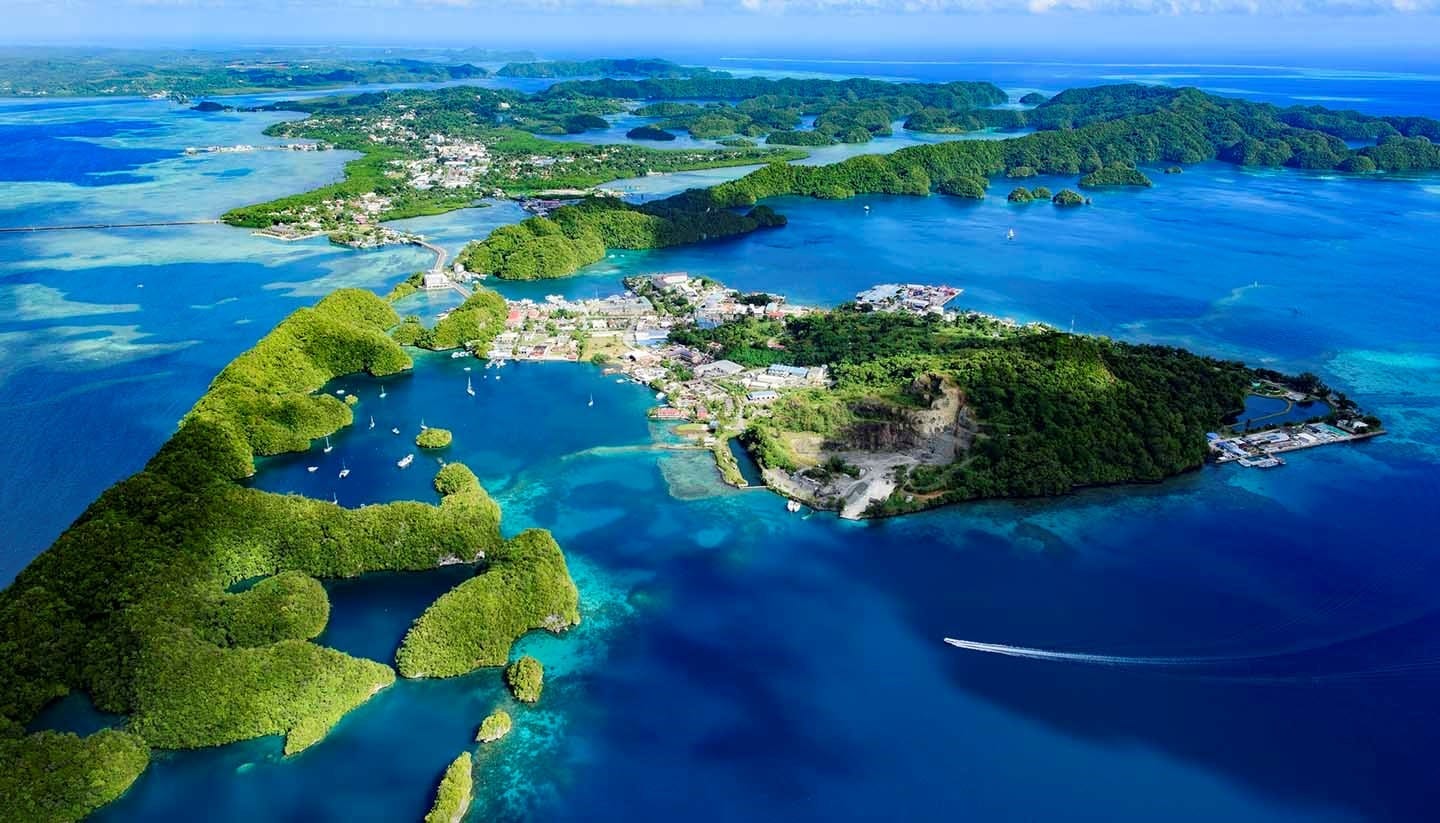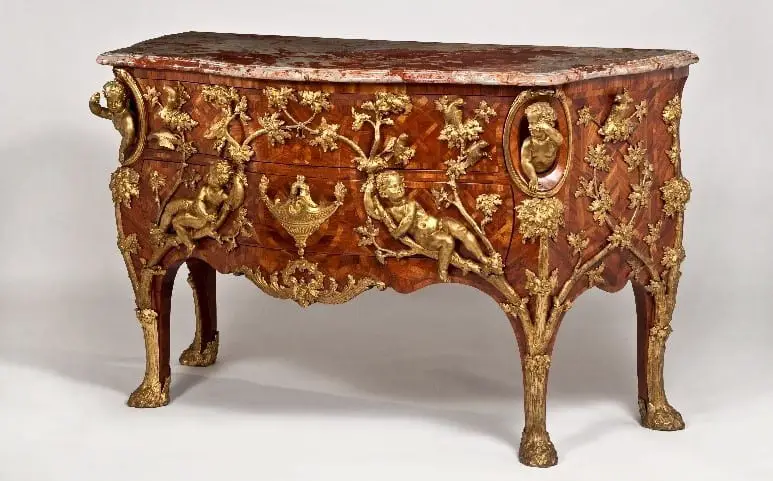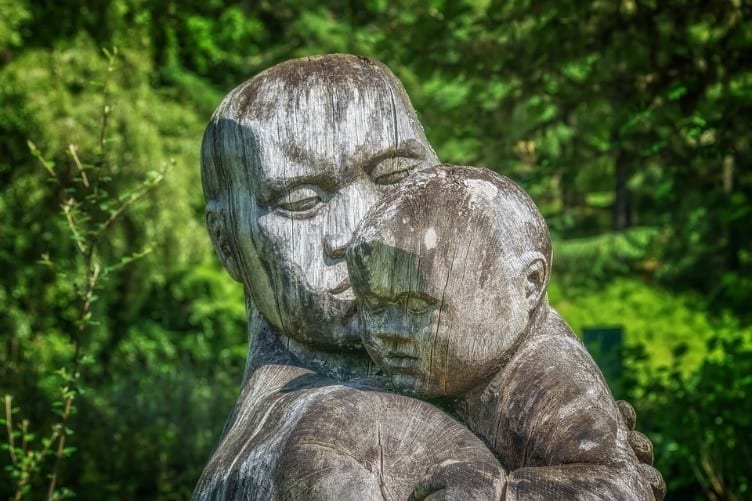
The traditions of Philippines wood carving date all the way back to the pre-colonial times.
The pre-colonial times mark the history of the Philippines before 1521. This period is also often referred to as the pre-Spanish era because afterward, the Spanish colonial power arrived in the country, starting the beginning of the so-called Spanish period.
However, the influence of different cultures has left a sparkling, distinct trace in the development of the unique Philippines wood carving style.
Certainly, it is no wonder that the ancient handicraft of Philippines wood carving has such a great exporting potential since art is highly valued worldwide, melting all boundaries away.
Now, we are heading on a journey to discovering the magic of traditional Philippines art from ancient to modern times. We will also look closely at the origins and meaning behind the magnificent wood carvings of the Philippine archipelago.
Nevertheless, we will discuss the future of fighting climate changes in the region with a mind to protecting the invaluable cultural inheritance of the nation.
Art from the Heart of the Philippines: A Magnificent Synthesis of Rich History Shaped by Authenticity
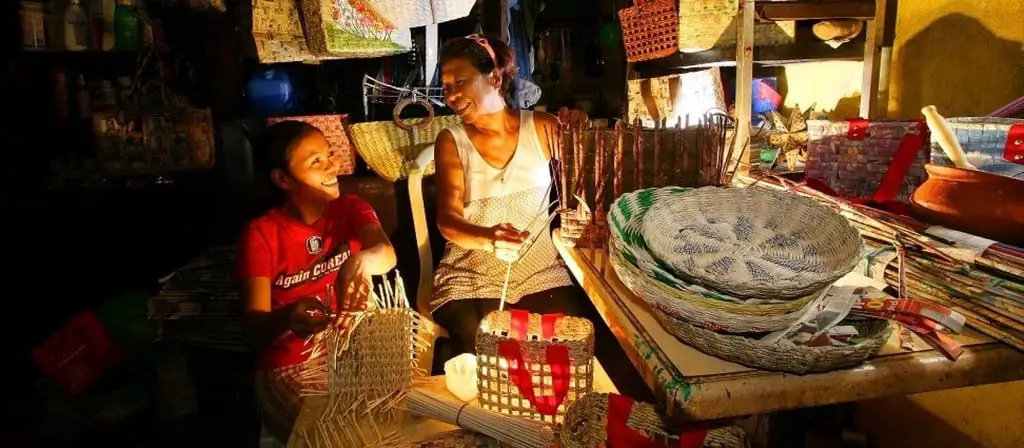
A beautiful example of the positive spirit of the Philippines: a Filipino family working on traditional handicrafts up late in the evening but always with a smile – Image Source
The Philippines islands have always been a fusion of exoticness, mystery, spirituality, traditions, and profound beauty.
However, it seems that we actually know too little about the amazing history of the country. Thus, for a start, it’s important that we get to understand better what shaped the traditions of the nation into what we know today.
Above all, the rich culture of the Philippines was influenced by many ancient civilizations, as well as different religious traditions.
For instance, Hinduism, Christianity, Buddhism, and Islam have all left a unique impact.
On the one hand, Filipinos proved to be extremely open-minded. Thus, they incorporated many of the foreign traditions into their crafts.
But on the other hand, they also managed to preserve the authenticity of their native culture. As a result, the spectacular fusion of diversity paved the path to creating art that is truly one-of-a-kind.
According to historians, Hinduism and Buddhism are the first to influence the Philippines all the way back to 700 – 1100 AD.
It wasn’t before the 14th century when Islam was spread throughout the country, although experts are still uncertain about the first spreading of the Muslim teachings.
On another note, one of the oldest Christian relics is the Santo Niño de Cebú, representing the Child Jesus. The ancient relic was a gift brought by the legendary explorer Ferdinand Magellan to the Rajah of Cebu and his wife in 1521 when Magellan first arrived at the islands. The Filipino Catholics highly honored the gift and believed it had miraculous powers.
Most noteworthy, long before the impact of various religions, native Filipinos have always been intricately connected to the spiritual world.
In fact, the identity of the locals is beautifully marked and shaped by the ancient legacy of their ancestors.

Shamanism is still alive in the Philippines – Image Source
Spirits and gods were seen as mighty deities that guard the natural forces such as mountains and forests. Moreover, each village had a highly respected shaman who was believed to be able to communicate with the supernatural world. Various offerings, including animal sacrifice, were part of the natives’ way of pleasing the mighty spirits.
Many of the locals who inhabit the Philippine archipelago up-to-date still value the spiritual inheritance of the old religion which further signifies the spectacular way Filipinos are able to merge ancient traditions with the trends of the new centuries.
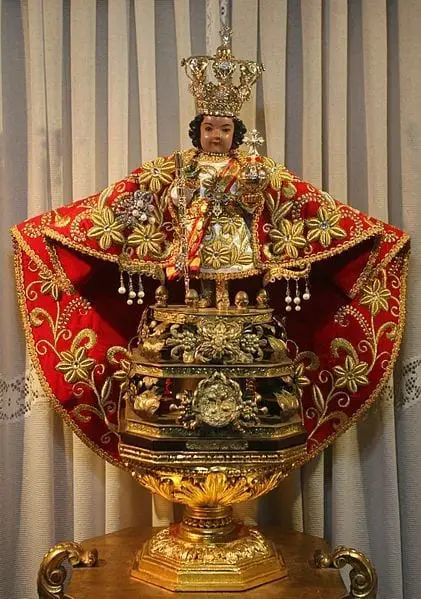
Santo Niño de Cebú – Image Source

A modern-day tribute to Santo Niño de Cebú – the Sinulog-Santo Niño Festival is one of the major annual religious festivals in Visayas Island, Cebu City – Image Source
Philippines Wood Carving: “We are Naturally Good at it!”
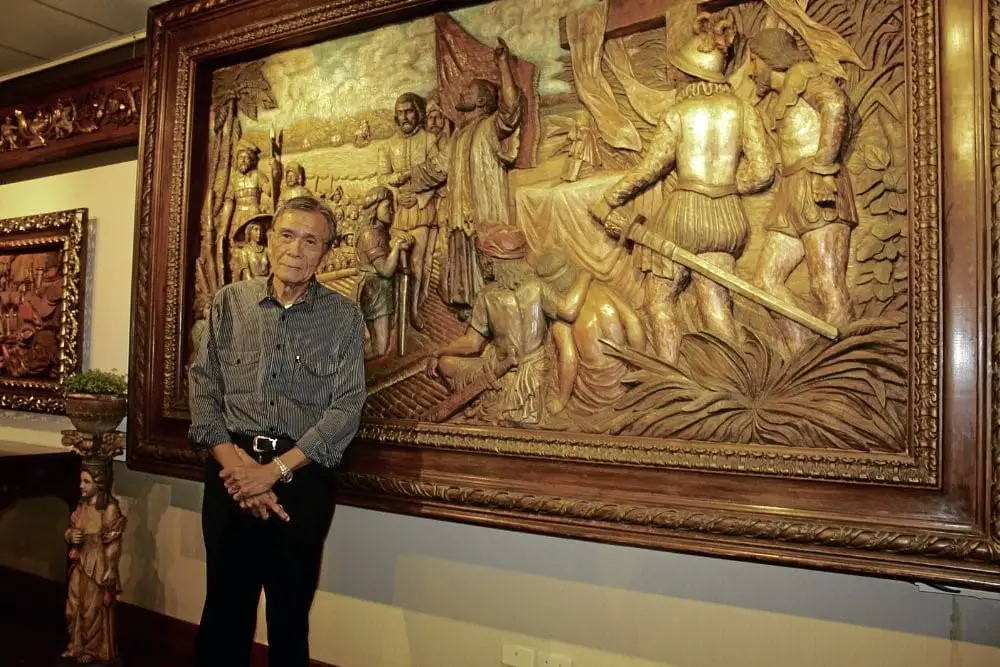
Daniel Flores in front of the magnificent woodcarving artwork of his father – Juan Culala Flores in the town of Betis, Pampanga, Philippines – Image Source
John de la Cruz who is an exporter, fish farm business owner and the author of ManilaTrade wisely sums up the ingenious talent of the Filipinos for woodcarving by saying that this is something locals are “naturally good at.”
And indeed, this is incredibly well-put. As a comparison, we can look at the way Latinos are naturally good at dancing to the rhythm of traditional Latin dances, such as cha-cha-cha, samba, and rumba. Or the Italians who are the world’s best pizza masters – as if making a good pizza is a skill that simply flows through their veins!
Above all, it’s important to highlight the fact that different provinces in the Philippines can amaze us with a distinct, unique style in the making of wooden sculptures and carvings.
From Paete Woodcarvings to Bamboo Woodcarvings
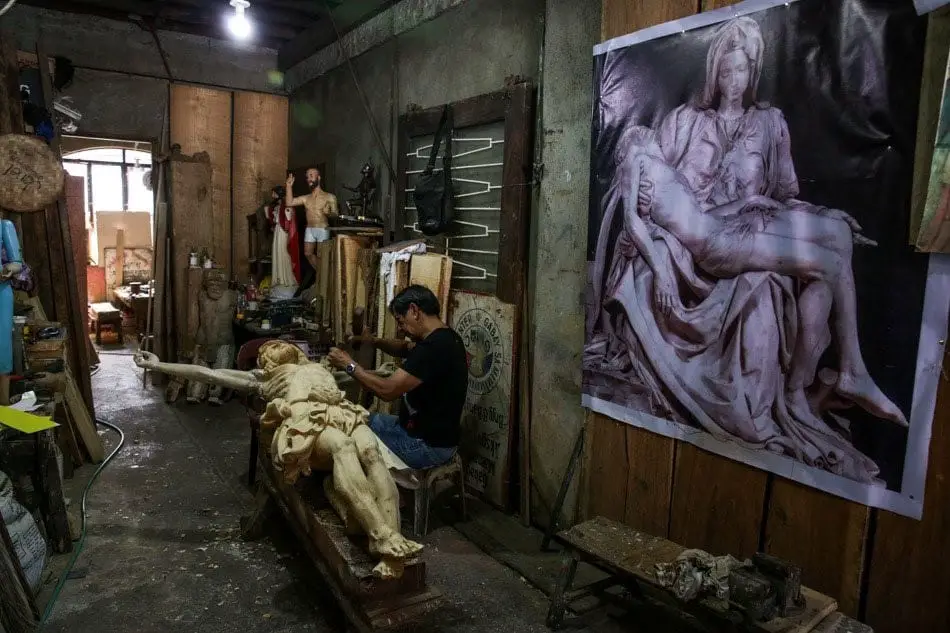
Talented woodcarver in his workshop in Paete – Image Source
Even though different provinces in the Philippines are all proud of their woodcarving traditions and style, there is one particular province that has made the art of woodcarving their trademark, and that’s Paete.
Paete means literally means chisel.
Interestingly, the story behind the curious name of the province is no less amazing by itself.
Actually, the name Paete was given by accident after a Franciscan priest misunderstood the response of a native Filipino. The priest wanted to know what’s this province but the local man thought the priest is asking about the tool he held in his hands – a chisel!
It was on March 15, 2005, when Paete was officially announced as the Carving Capital of the Philippines.
Beautifully, the woodcarvers in the district have established a solid relationship with the ancient traditions of the woodcarving craft. Thus, most of the gifted wood virtuosos are already 3rd or 4th generation master woodcarvers descendants.
Meanwhile, a modern-day wood design wave is also on the rise.
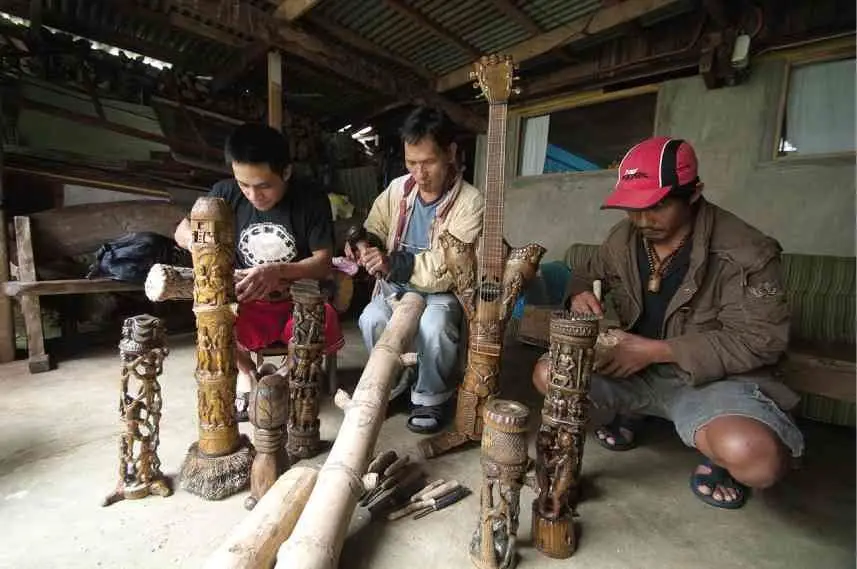
Members of the Asin Bamboo Carvers Guild Inc. (ABCGI) – a brand new industry trend utilizing Bamboo as an alternative material to cutting down trees in order to obtain wood – Image Source
Bamboo is becoming a widely-used material in some regions of the Philippines, contributing to the local economy due to the high-interest visitors of the country show when it comes to bamboo-made carvings. In fact, the Philippines is the 5th largest bamboo exporter in the entire world, based on recent research from 2018.
Above all, the master woodcarvers realize the huge importance of embracing an environmental-friendly attitude. And indeed, bamboo makes a perfect alternative to the hardwood as bamboo grows extremely fast, hence, it is a quickly renewable material.
However, carving bamboo actually proves to be more time-consuming than working with hardwood. As a comparison, a bamboo carving can take approximately 2-3 weeks to finish while a typical hardwood carving typically takes only several days.
But Roldan Dulnuan Pait who is the President of ABCGI says that “… [] bamboo carving is worth one’s time because we are doing works of art. Our mission is to sustain the Ifugao’s wood carving tradition… []”
Philippines Wood Carving Exporting Potential: Highlighting the Importance of Handicrafts
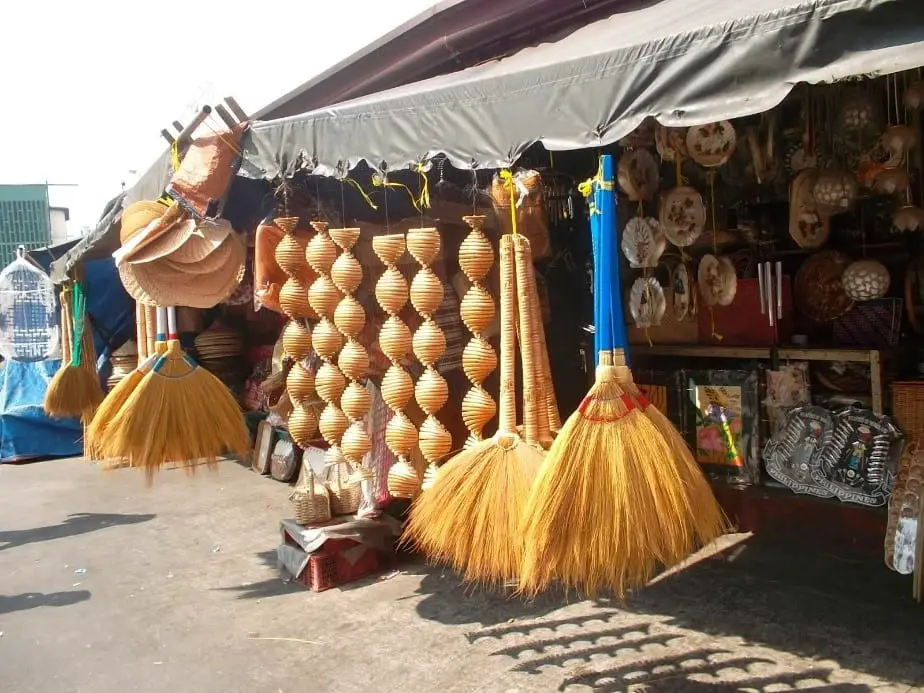
Colorful handicrafts sold under Quiapo Bridge, the Philippines – Image Source
Essentially, what makes Philippines wood carving so incredible is the fact that the natives have managed to preserve the traditions of ancient crafts.
Thus, the beautiful carvings are solely made by hand. The lack of influence on the art of Philippines wood carving by industrialization, mechanization, as well as modern technology systems is what truly makes the art unique.
And it couldn’t be any other way since the Filipinos pay a tribute to their ancestors by preserving the traditional handicrafts alive, and most importantly – unspoiled and untouched by the hand of technology globalization.
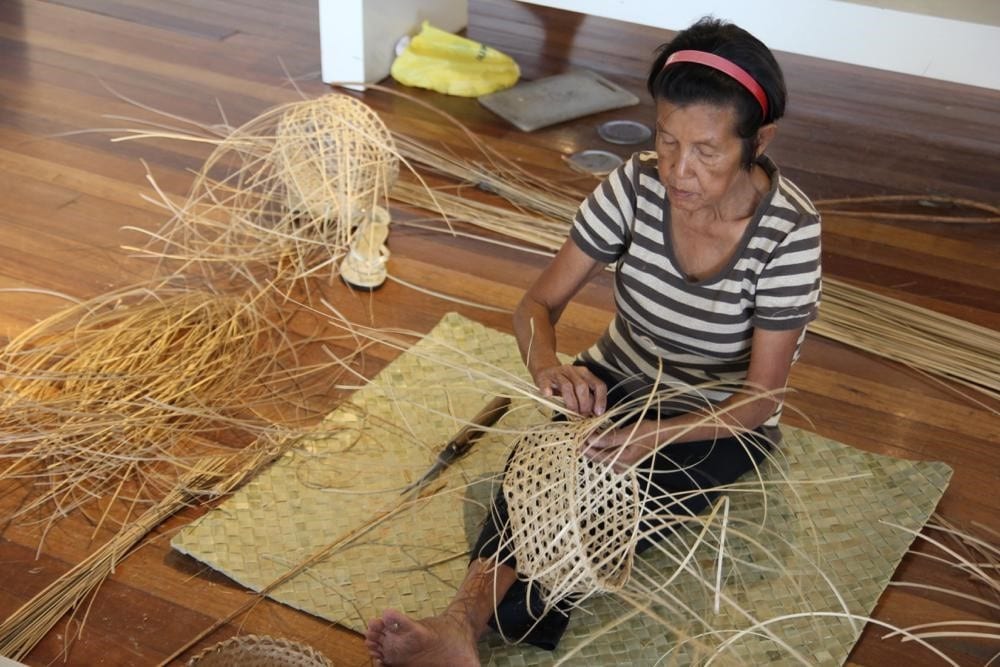
A mat and basket weaver takes part in hands-on demonstrations focused on teaching visitors about the Filipino culture. Location: National Museum of the Philippines – Image Source
As a comparison, China’s mind-blowing production rates have played a bad role in the exporting economy of native Philippines wooden artwork.
However, slowly but surely the people around the world are starting to appreciate better the value of high-quality handmade products. Although there is no place for competing with mass-produced items such as, for example, the ones created by the Chinese manufacturing sector, the Philippines magnificent carving artwork brings value through uniqueness and authenticity.
Certainly, both of these amazing features can’t be found in items that are produced in a high-scale environment, often exploiting human labor in factories that further pollute the air and contribute to the rapid climate changes.
Indeed, the art of Philippines wood carving can be called the art of the future as it is a sustainable form of spreading the cultural inheritance of the country while also contributing to the income of the natives, as well as the country’s economy in return.
Currently, the Philippines islands have well-established major trade relationships with Japan, the United States, Taiwan, Germany, the Netherlands, and South Korea, to name a few. The leading export goods include electronic products, transport equipment, coconut oil, copper products, and fruits, among others.
Bululs: The Ancient Carved Wooden Figures that Protect the Rice Crop of the Philippines
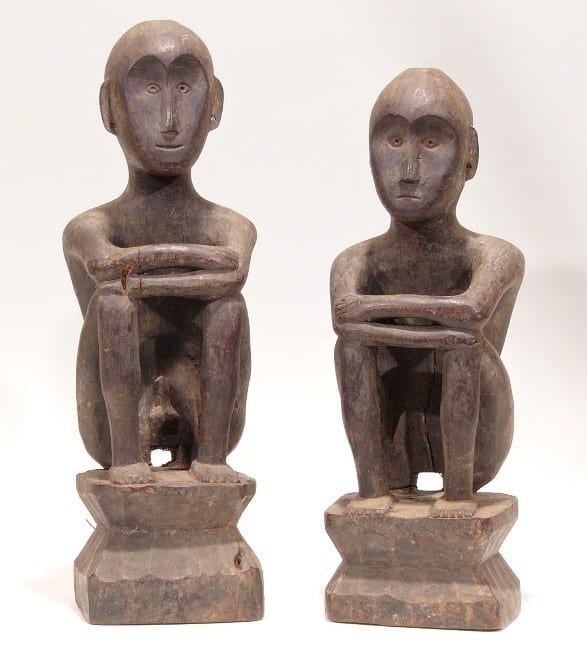
A pair of male and female bulls from the district of Banaue, carved from Narra wood. Cultural property of the National Museum of the Philippines – Image Source
The bululs represent the ancestors of a family in a highly stylized way. The wooden figures are typically found in a pair – a male and a female bulul. It is through the energy of the ancestral spirit that the bululs gain special powers.
Bululs are associated with the Ifugao.
The Ifugao people belong to the Cordillera ethnic groups (also referred to as Cordillerans). Cordillerans is the collective name for the Austronesian ethnic groups that inhabit the mountains of Luzon in the Philippines. The Ifugao region has become well-known to tourists for Banaue Rice Terraces.
The Ifugao used the bululs for protection and blessing by placing them together along with granaries or rice for a bountiful harvest season. Traditionally, bululs are carved from Ipil or Narra wood. Nowadays, ipil wood is threatened with extinction.
The Philippines & the 21st Century: Raising the Awareness about the Effect of Climate Changes on a National and Global Level
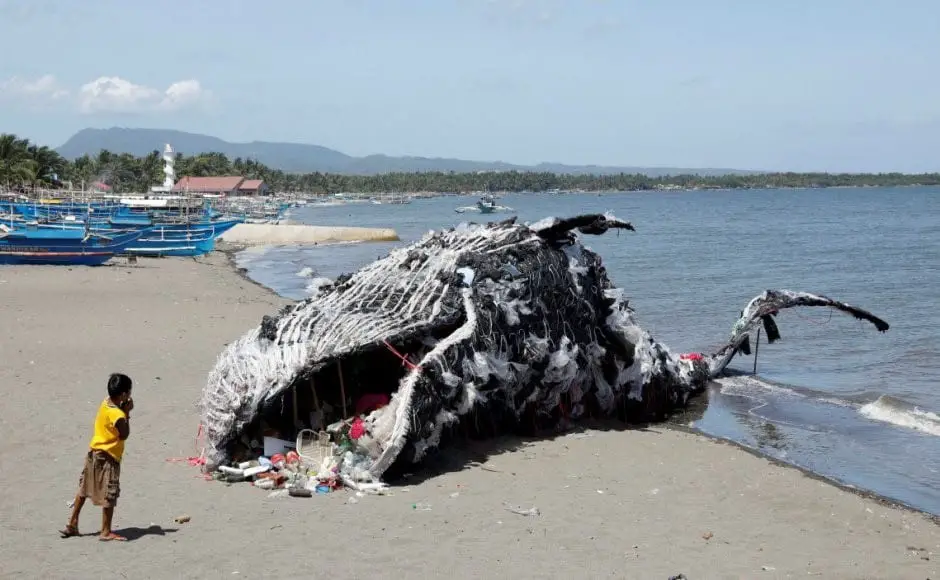
A giant “beached” plastic whale artwork: the project is powered by the Philippines Greenpeace in order to raise environmental awareness – Image Source
The Unbreakable Spirit of the Philippines

Lifesize Christmas lanterns spreading the Christmas spirit vibes by showing the traditional Filipino customs at the Mactan International Airport in Cebu City – Image Source
Above all, the Philippines is a country that represents the true power of the unbreakable human spirit and will to live. At the very first sight, the Philippines is a tiny place of Heaven on Earth, surrounded by tranquil waters, mesmerizing landscapes and abundance of natural resources.
But despite the relatively small territory it covers, the Philippines ranks at number 4 of the most disaster-prone countries in the world, according to The Human Cost of Weather Related Disasters – a study that tracked a period of just 2 decades (1995-2015).
In fact, after taking into consideration the disasters that hit the Philippines islands after 2015, the country currently ranks at number 3 instead of number 4 in the list of the most disaster-prone territories.
Unfortunately, it is the impact of mankind on Planet Earth that has caused the negative changes in the climate, which in return increased the chances and occurrence of earthquakes, cyclones, tsunamis, wildfire, landslides, volcanic eruptions, and floods.
Video by SBS Dateline – Living with the Dead
Source: youtube.com
The Philippines Way of Fighting Back Climate Changes: A Message to the World
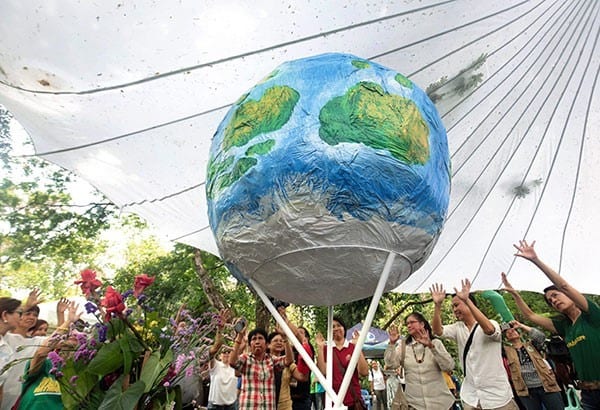
Celebrating Planet Earth’s Day in the Philippines – “The Philippines will continue to be at the forefront to protect the environment and fight climate change,”– Image Source
Despite all the natural disasters that hit the Philippines, there is light at the end of the tunnel. Thankfully, both the Philippines government, as well as partners from across the globe are working hard towards reducing and managing the issues associated with climate changes and the high risk of disasters.
For example, the pilot program named Disaster Risk Reduction & Management (DRRM) started in 2014, establishing a long-term strategy “to minimize loss of lives, crops, and property.”
But what’s more, the country is rapidly working towards raising the environmental awareness on a national, as well as a global level. One spectacular example on that matter is the plastic whale project powered by the Philippines Greenpeace in 2017.
This particular project was inspired after the tragic death of a 37-foot sperm whale. The dead whale was found on the beaches of Samal on December 16, 2016. The reason for the abrupt death of the magnificent whale is the plastic, steel wire, and fishnet found in its stomach later on.
It is only through mutual efforts that we can preserve the art of Philippines wood carving that is a cultural inheritance for the next generations.

Both residents and tourists gathered around the whale to show care, respect, and support. Unfortunately, the whale passed away the following day – Image Source
Philippines Wood Carving and its Exporting Potential: The Takeaway

Festivals in the Philippines are just as colorful as the cultural inheritance of the natives – Image Source
There is a traditional Philippines proverb “Ubos-ubos biyaya, pagkatapos ay nakatunganga,” which translates into “Today you spend everything, tomorrow you’ll have nothing.”
The Philippines is a piece of Heaven on Earth where people know how to be thankful for what they have, as well as for what they don’t have.
Woodcarving is the type of art that brings fairytales, myths, and legends to life. Holding a handcrafted wooden sculpture can let you see the world through the eyes of the talented woodcarver who created it.
Undoubtedly, the exporting potential of Philippines woodcarving artwork will keep expanding in the following decades. Just like the magical Adarna – the mythical bird of the Philippines that can change in several majestic guises and rises from ashes of destruction so is Philippines wood carving set to keep spreading the message of love and prosperity for all through sharing and preserving the invaluable cultural inheritance.
